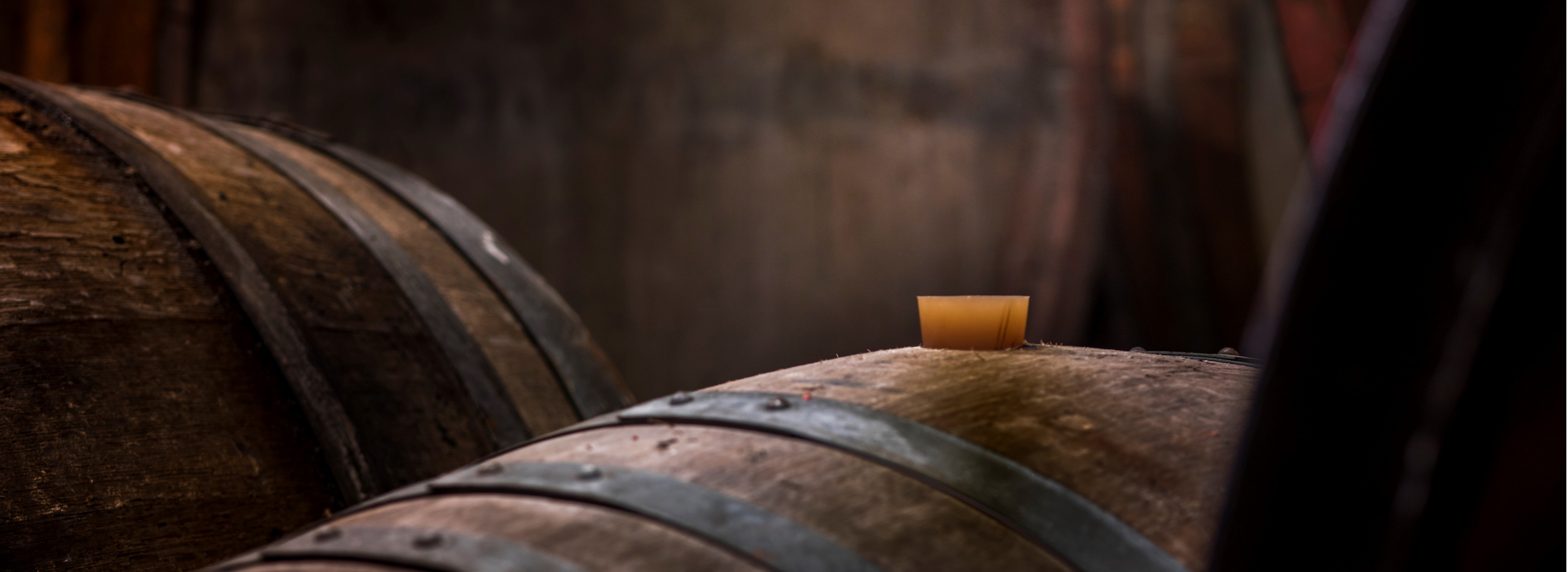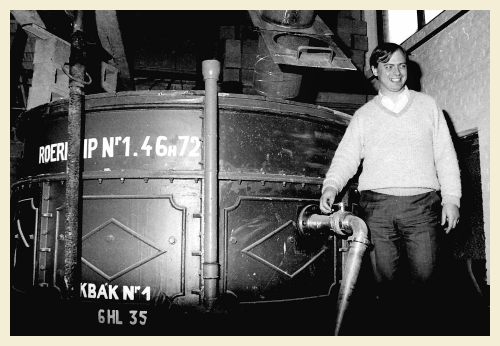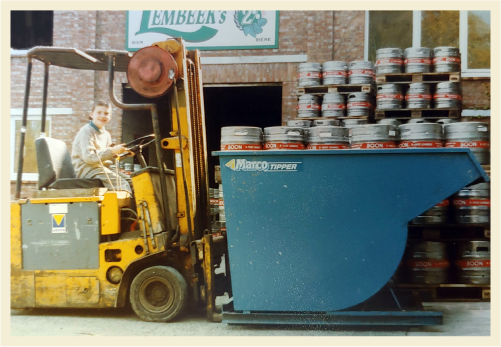The history of Boon

Frank Boon, a Geuze blender with a dream
Our story starts with young Frank Boon travelling through Belgium to discover the local speciality beers. Frank soon became very fond of the Geuze and Lambic beers from his own region. Inspired by one of the last Geuze blenders René De Vits, he started to blend Geuze himself in a small cellar in Halle, determined to revive this rich tradition.

Establishment of the Boon Brewery
René De Vits saw little future in Geuze, but Frank Boon developed a great passion for this local beer style. Frank worked hard to take over the business from René. In 1975, Frank became an independent Geuze blender, which marked the start of the Boon Brewery.

Geuze Mariage Parfait
Geuze is not brewed, but is a blend of Lambic beers of different ages. When Frank successfully created the perfect marriage between the best Lambic beers, a very special traditional geuze was born: the Mariage Parfait.

Site in Hondzocht
After Frank Boon had taken over René De Vits’ Geuze blendery, he moved the activities to Hondzocht, a hamlet that is part of Lembeek. This location was a conscious choice, as the word 'Lambic' originates in Lembeek. In the following years, the stock of Lambic beers rose again.

Move to the centre of Lembeek
More and more Lambic breweries were still closing their doors, so the future of Geuze was not yet assured. That is why Frank Boon started to build his own brewhouse at a new site in the centre of Lembeek.

The first brew
The first brew of the new brewhouse was done in the autumn of 1990. The new brewhouse had been built using second-hand equipment from older breweries, as new equipment was still unaffordable. It was the first time in more than 40 years that a new Lambic brewhouse had been built. It is one of the key moments that earned Frank Boon his nickname as the saviour of Geuze.
The construction of the new brewhouse is financially supported by Jan Toye as a cultural project. After working together for 32 years, he will entrust his shares back to the Boon family in 2021.

TSG label
The label for Traditional Speciality Guaranteed (TSG) was created by the European Union to protect traditional lambic beers such as Boon Brewery's Oude Geuze and Oude Kriek. Not every Geuze or Kriek beer can call itself 'Oude'. To earn this title, the beer must be of high quality and made according to the traditional recipe and authentic methods with bottle conditioning.

A second foeder warehouse
The stock capacity was expanded to meet increasing demand. 19 large foeders – large oak barrels – with a capacity of 6,500 to 8,000 litres were installed in a second foeder warehouse. In the existing warehouse, the old barrels were replaced by other foeders to complement the 17 foeders already in place.

A third foeder warehouse
After the establishment of a third foeder warehouse, the Boon Brewery owned no less than 130 foeders. The largest foeder now had a capacity of no less than 12,500 litres. At that time, the brewery already has a stock of almost 1 million litres of Lambic maturing in oak barrels.

The arrival of the second generation with Jos Boon
In 2012, Frank Boon had been working as a lambic brewer and blender for 40 years, but wasn’t thinking of retiring yet. However, he did assure his succession by asking his oldest son Jos Boon to join him at the brewery. Jos had graduated as a bio-engineer specialising in brewing and malting from KU Leuven university.

New brewhouse
Lambic beer was selling more quickly than it could be brewed, so a new brewhouse was urgently needed. The new brewhouse opened in April 2013 and more than tripled the brewery's capacity. It is mostly automatic, consumes 70% less energy and was specially designed to brew Lambic beers the traditional way.

Monoblends
The Oude Geuze Boon VAT 44 Monoblend was released on the occasion of the opening of the new brewhouse. It was a blend of 90% Lambic from foeder no 44 and 10% young Lambic. This unique Oude Geuze was the start of a whole series of Monoblends each using Lambic from a different oak barrel.

Establishment of the coopers’ workshop
On average, the oak barrels or foeders in which the Lambic matures need a thorough overhaul every 15 years. As this calls for specific craftsmanship, the Boon Brewery set up its own coopers’ workshop (cooperage). This workshop is unique in Belgium: Frank Boon, his son Jos and the trained coopers team are the only people in the country who can maintain Boon's foeders exactly the way it should be done according to the conventional methods.

Oude Geuze Boon Black Label
Oude Geuze Boon Black Label was launched on the occasion of the Boon Brewery's 40th anniversary. The Black Label was a real masterpiece: this exclusive beer had a very dry finish thanks to a special selection of Lambics with the highest levels of fermentation. The first two editions were called 'Limited Edition' and 'Second Edition', but the later editions are now simply referred to with a large number on the bottles.

Karel Boon strengthened the second generation
The Boon Brewery became even more of a family business when Karel Boon, son of Frank and brother of Jos, also started working there full time. Karel had studied Applied Economics Sciences at KU Leuven university and had already gained experience at another brewery. Like Jos, he had grown up right next to the brewery, where he had often lent a hand. That is how his passion and ambition to help run the brewery grew.

Fourth foeder warehouse
The fourth foeder warehouse located on the other bank of the Zenne was put into service. It houses about 40 huge foeders, each with a 4-metre diameter and a capacity of around 25,000 litres. The Boon Brewery now has 161 oak foeders for storing and maturing 2.1 million litres of Lambic.

Belgian Family Brewers
The Boon Brewery joined the Belgian Family Brewers, an association that promotes historic, independent family breweries that add value to the identity and authenticity of Belgian brewing methods. It gives authentic Belgian beers a chance to distinguish themselves from other beers in the best possible way.

Schaarbeek cherries
For the first time since 1989, Oude Kriek Boon was again made with Schaarbeek cherries.
This Kriek variety owes its name to the market of Schaarbeek where cherries used to be sold to the Lambic brewers. The annual harvest is limited, so the Schaarbeek cherries are only a fraction of the 300 tonnes of cherries that the Boon Brewery uses each year.

Apogee
On January 1, 2021, Frank Boon retired. His sons Jos and Karel will take over the helm - or rather the mash paddle. In honor of his brewing career, which has been invaluable to Belgian beer culture, the family has created a special Oude Geuze, the Apogee.
Frank remains involved in his life's work by remaining available to Jos and Karel for advice in order to further share his carefully accumulated expertise and knowledge with them.

Belgian oak wood for sustainable foeders
10 Belgian oak logs were purchased to maintain the foeders of the brewery. The trees are 250 years old and could only ever be cut down for sustainable purposes. The oak wood is used to maintain all the brewery's foeders to make sure they reach an age of 200 years. It is one of the Boon Brewery's ways to give deeper meaning to the concept of long-term thinking.






